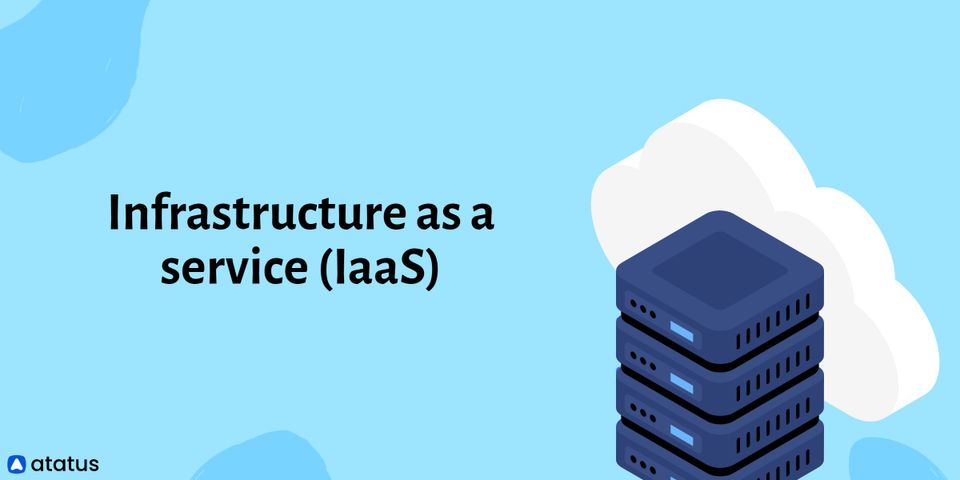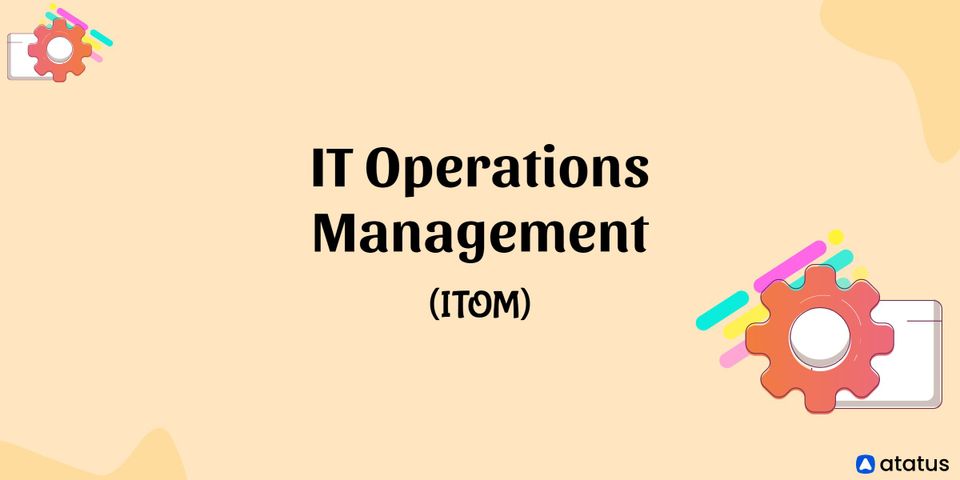Cloud infrastructure contains as a bare minimum core compute, storage, and network resources. Higher-level services such as relational and NoSQL databases, real-time and batch data processing, developer pipelines and services, containers, and functions have recently been added. IaaS, unlike other services, is not for the average user. IT operations, DevOps, system and database administrators, and full-stack developers are all prospects for IaaS.
We will go over the following:
- What is Infrastructure-as-a-Service (IaaS)?
- How does IaaS work?
- IaaS Use Cases
- Benefits of IaaS
- Challenges in IaaS
- Why IaaS is Important?
What is Infrastructure-as-a-Service (IaaS)?
Infrastructure-as-a-Service (IaaS) is a cloud computing service model that refers to the on-demand availability of nearly indefinitely scalable computing resources as internet-based services. It removes the need for businesses to purchase, configure, or operate their own infrastructure, and they only pay for what they use. IaaS allows businesses to migrate some or all of their on-premises data centre infrastructure to the cloud, where it is owned and managed by a cloud provider.
The cloud provider owns and operates the hardware and software, as well as owning or leasing the data centre, in the IaaS model. You rent compute and storage resources from an IaaS provider, provision them as needed, and pay for the resources your organisation uses. You will be charged for the resources you use, such as computing. You'll have to pay for capacity for others such as storage.
In the early 2010s, IaaS became popular, and it has now become the standard abstraction paradigm for a wide range of workloads. With the introduction of new technologies like containers and serverless, as well as the emergence of the microservices application model, IaaS remains foundational, but it is now more crowded than ever.
How does IaaS Work?
In a typical IaaS approach, a business of any size uses a cloud provider to get services like computation, storage, and databases. These services are provided by the cloud provider, who hosts hardware and software on the cloud. The company no longer needs to buy and operate its own equipment or space to store it, and the expense is now paid on a pay-as-you-go basis.
When a company has fewer needs, it pays less. It can also offer extra computing resources and other technologies in minutes as it grows.
A business manages and maintains its own data centre in a classic on-premises environment. The organisation will need to buy, manage, and upgrade servers, storage, software, and other technologies, as well as hire an IT team or contractors to buy, maintain, and upgrade all of the equipment and licences. Even if workloads fall and those resources sit idle, the data centre must be built to handle peak demand. In contrast, if the company expands quickly, the IT staff may find it difficult to stay up.
IaaS Use Cases
IaaS stands for general-purpose compute resources and may thus accommodate a wide range of use cases.
- Test and Development
To get new applications to market faster, IT teams may quickly construct development and test environments. As part of their development process, IaaS allows teams to automatically generate test and development environments. - Web Applications
Storage, web servers and networking are all included in IaaS, which provides all of the infrastructure required to run large-scale web applications. Organizations can use IaaS services to swiftly launch web applications and easily expand their infrastructure as their application requirements grow or shrink. - Storage, Backup, and Recovery
The high upfront expense of storage and the complexity of storage management can be avoided. Cloud storage services minimise the need for skilled staff to handle data and comply with legal and regulatory standards, as well as allowing businesses to respond to storage needs on-demand. It also makes backup and recovery system planning and management easier. - High-performance Computing
By executing difficult and complex problems with millions of variables and calculations on supercomputers or large clusters of computers, high-performance computing (HPC) can assist in the analysis of problems and complex problems with millions of variables and calculations. The major IaaS providers provide services that make HPC accessible to small enterprises, allowing them to use HPC on-demand rather than investing much in HPC infrastructure. - Big Data Analytics
In today's economy, big data processing and analysis is vital, and it necessitates a complex infrastructure that includes large-scale storage systems, distributed processing engines, and high-speed databases. All of this infrastructure is provided as a managed service by IaaS providers, and most of them also provide PaaS services that can execute the real analytics, such as machine learning and AI.
Benefits of IaaS
Compared to typical on-premises data centres, IaaS has a number of advantages. Organizations can use IaaS to:
- Speed
Long provisioning times of weeks or even months affect even virtualized on-premises infrastructures. Entire application environments can be deployed in minutes with IaaS. - Scale Faster
During peak workloads, such as monthly reporting periods, businesses require more resources. The infrastructure may scale in minutes using IaaS, allowing workers to focus on more business-critical tasks and reporting. - Reduce Expenses
IaaS users don't have to buy, operate, or maintain infrastructure, and they only pay for what they use, even if the depreciation period is five years or longer. - Improve Business Continuity
It has redundancy built-in at every layer, offers multiple fault domains and geographically distributed locations, and is run at a massive scale by operations experts. In comparison to on-premises deployments, cloud infrastructure often gives a higher level of uptime and more disaster recovery alternatives. - Increases Stability, Reliability, and Supportability
IaaS reduces the need for software and hardware maintenance and upgrades, as well as dealing with equipment difficulties. With the proper agreement in place, the service provider ensures that your infrastructure is reliable and meets service-level agreements (SLAs). - Pay-as-you-Go
Unlike traditional IT, IaaS requires no upfront capital investments, and end customers are simply charged for the services they consume. - Focus on Core Business
IaaS relieves IT departments of the burden of managing and maintaining on-premises hardware and software, which can consume up to half of their resources. Organizations can also use IaaS to give DevOps and other teams direct access to the infrastructure, allowing them to operate and test faster. - Accelerate Innovation
IaaS allows you to test new products and ideas quickly, easily, and affordably. Rather than developing thorough projections and investing in new infrastructure, businesses may set up cloud infrastructure in minutes and scale it up or down as needed.
Challenges in IaaS
Even though IaaS has many benefits, it also has certain challenges, which are as follows:
- Security
One of the most pressing concerns in IaaS is security. The majority of IaaS suppliers are unable to provide complete security. - Maintenance & Upgrade
Although IaaS service providers update the software, some organizations do not receive upgrades. - Issues with Interoperability
Since it is difficult to transition VMs from one IaaS provider to another, consumers may encounter vendor lock-in issues.
Why IaaS is Important?
Provisioning and scaling environments for DevTest and production takes less time and expense using cloud infrastructure. This allows developers and DevOps teams to experiment and innovate more freely. Businesses can scale their infrastructure up or down as needed by making computing services accessible on-demand, paying only for what they use on an hourly, daily, or monthly basis, while handling a larger peak scale than is conceivable in most on-premises environments.
IaaS may provide organizations with new and enhanced equipment and services, such as the newest processors, storage, networking infrastructure, and container orchestration, that many businesses could not afford or get as quickly on-premises. IaaS is available in most geographies, with a regional presence near major population centres, allowing enterprises to swiftly expand their online footprint.
For businesses, especially IT departments, switching to an IaaS model can be transformative. Instead of spending so much time monitoring and supporting on-premises infrastructure, IT professionals can focus on high-value tasks that help the company become more efficient and productive. Pay-as-you-go also lowers forecasting errors and keeps expenditures in line with actual requirements.
Summary
Your cloud provider's purpose is to maintain that your IT environment is as good as it can be. They frequently offer cutting-edge hardware, so you won't have to go out and research and buy it yourself. Furthermore, upgrading your infrastructure does not require specialist training or lengthy provisioning cycles. Instead, you'll have more time and resources to devote to your company.
Monitor Your Entire Application with Atatus
Atatus provides a set of performance measurement tools to monitor and improve the performance of your frontend, backends, logs and infrastructure applications in real-time. Our platform can capture millions of performance data points from your applications, allowing you to quickly resolve issues and ensure digital customer experiences.

Atatus can be beneficial to your business, which provides a comprehensive view of your application, including how it works, where performance bottlenecks exist, which users are most impacted, and which errors break your code for your frontend, backend, and infrastructure.





